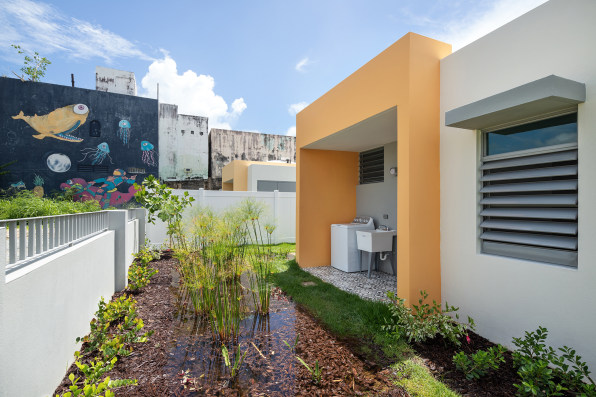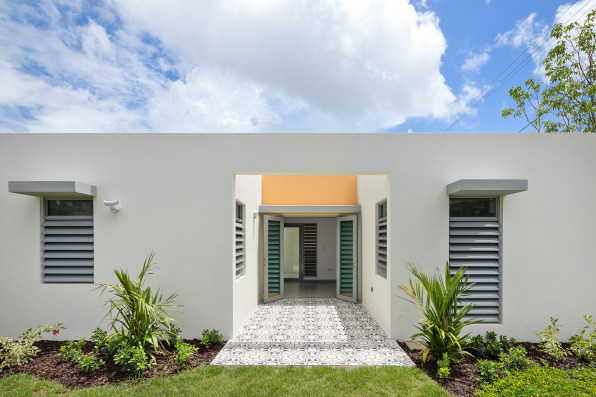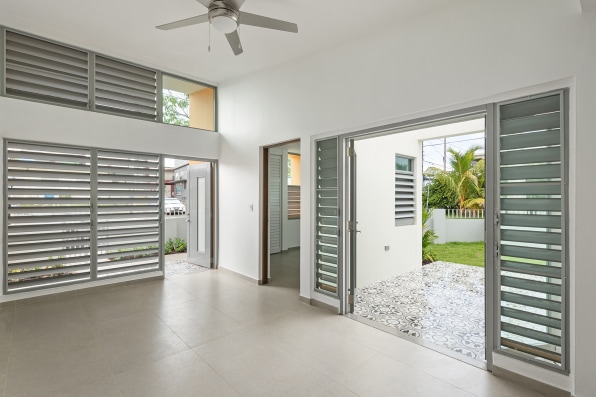After Hurricane Fiona tore through Puerto Rico on Sunday, roads in the small mountain city of Caguas—hit with more than 20 inches of rain—were underwater. Landslides washed away some streets. As on the rest of the island, the electric grid went down, and it wasn’t clear how many homes had been damaged or destroyed.
But in two new prototype homes, the electricity stayed on.

“They’re fully off the grid with electricity and potable water,” says Jonathan Marvel, founder of Marvel Architects, a firm based in both New York and Puerto Rico that designed the new houses.
The city donated the land, and a nonprofit called Acacia paid to build the homes as an example for communities, with plans to build hundreds more across the island and help residents build their own.
With thick, reinforced walls, they’re designed to survive earthquakes and hurricane-force winds. Passive design strategies, including insulation, shade, and natural cross-ventilation, help keep them cool. Solar panels provide electricity. A cistern stores and filters rain to provide drinking water. (Right now, because of the hurricane, thousands of people in Puerto Rico lack potable water.)
Five years ago, after two devastating hurricanes hit Puerto Rico—first Irma, and then Maria just weeks later—Marvel, who was born on the island, started working to help bring power to the most vulnerable communities through another project, which became a nonprofit called Resilient Power Puerto Rico.

The nonprofit has helped build 38 “solar hubs” at community centers, with solar panels and battery systems that can provide electricity for community members during emergencies and during the island’s frequent blackouts.
“It’s a monthly occasion: You have a power outage,” Marvel says. Puerto Rico’s beleaguered, bankrupt state utility, PREPA, repeatedly failed to keep the grid running smoothly, and after it was privatized last year and taken over by Luma, a Canadian company, it continues to struggle.
The solar hubs, meanwhile, have shown that they work. Because the hurricane had disrupted communication, when we spoke on Monday morning Marvel hadn’t yet learned whether the hubs were running, but he said it’s very likely they’ve made it through the storm.
Resilient Power Puerto Rico also helps communities build their own projects by providing technical assistance and a tool that helps them quickly gather data about their local vulnerability in disasters so that they can access grants more easily. The group has also given away solar panels for private homes and community buildings.
Nevertheless, Marvel saw the need to help design more resilient new houses. As climate change makes hurricanes stronger, Puerto Rico’s risk of devastation increases.

The homes are designed to be as affordable as possible while still resilient in disasters.
“I don’t want to say ‘affordable,’ because the average Puerto Rican income is below the level of poverty in the United States,” Marvel says. “So this is a housing system that’s going to require assistance to build.”
He argues that families should be able to get loans to build houses that can survive hurricanes and other disasters. Existing houses should also have solar panels, he says, and it should be as routine to get a loan for those panels as it is to buy a car.
Residents will soon move into the first two houses, and Acacia plans to build 1,000 of the homes across Puerto Rico.
“If you have 10, 20, 100 per community, they become the standard for future construction,” Marvel says. “And it’s a fairly DIY kit. With technical support, these can be built by families themselves.”